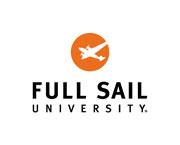
| # | Mistake |
|---|---|
| 1 | Not having an digital portfolio at all |
| 2 | Making excuses |
| 3 | Using confusing and unprofessional gallery sites, such as DeviantArt |
| 4 | Flaunting Flash |
| 5 | Only displaying samples of fine art when your goal is to work in games, entertainment, or any other commercial industry |
| 6 | Clumping your art together in a giant pile |
| 7 | Treating all of your work equally |
| 8 | Presenting school work in your portfolio (with the exception of life drawing) |
| 9 | Fan art as portfolio pieces |
| 10 | Forgoing complete contact information |
Itʼs a new era for artists with the dawn of the digital age. A lot of graduates from art schools are flooding the market every day and the competition is stacking. How can you stand out in the crowd? It may not be as difficult as you think, and the way your online portfolio looks can make all the difference.
When I review artist candidates the same problems seem to arise time and time again, and those errors can cost an artist many job opportunities. Here is a list of easily avoidable but common mistakes when it comes creating and presenting your digital portfolio:
- Not having an digital portfolio at all. Not only should you absolutely have your work online, but your URL and email address should be as simple and professional as possible. http://www.yourname.com is what you should aim for, or some brief, easy-to- remember variation of that. Your email would ideally be info@yourname.com, but yourname@gmail.com will work just as well.
- Making excuses. If you donʼt know how to build a website, there are some amazing resources online that will help you build your portfolio in a snap. Sites like CarbonMade are free to use but can link to your siteʼs domain name for a nominal monthly fee. Not only that, but itʼs easy to upload and organize a lovely portfolio in minutes.
- Using confusing and unprofessional gallery sites, such as DeviantArt. While DeviantArt is wonderful for personal use, you never want to confuse a potential client who may not be familiar with dAʼs overwhelming interface. Keeping your website simple and your contact information prominent is crucial to securing work.
- Flaunting Flash. Flash websites can be cumbersome, confusing, and overdone. Worst of all, a majority of mobile devices will not be able to access your site. You never know when you might bump into a potential client and will need to pull up your portfolio on an iPhone. If you are a flash artist or animator, by all means, have reels and samples of your work on your site. Just make sure itʼs an HTML site.
- Only displaying samples of fine art when your goal is to work in games, entertainment, or any other commercial industry. While a section of your oil paintings is perfectly acceptable and well-appreciated, many employers want to see that an artist can use modern tools such as Photoshop and a Wacom tablet. Be sure to include samples of digital work as well.
- Clumping your art together in a giant pile. Try to organize your work by type, for example: game assets, illustrations, storyboards, etc. Doing this will not only help organize your portfolio into easily submittable sections for jobs that may require a specific skill set, but will show clients youʼre efficient and organized.
- Treating all of your work equally. Pick out pieces youʼre especially proud of or can easily discuss, and showcase them prominently. Place these and/or recent works in the beginning of the portfolio so you always have something fresh or exciting to open with.
- Presenting school work in your portfolio (with the exception of life drawing.) A lot of school projects are hackneyed ideas that have been seen many times before and will often label you with any stereotypes associated with that school (both good and/or bad.) It will make you more valuable if you can demonstrate creativity and personal work in your portfolio.
- Fan art as portfolio pieces. Fan art, unless featured (like in a gallery or on television) or given an award, is generally bad to have in a professional portfolio. The client may be confused as to whether you created the character in question or worked on the production itself. This can create some awkward situation, especially if the client owns the property that is the subject of said fan art!
- Forgoing complete contact information. Your initials shouldnʼt be the only thing on your art! Every piece in your portfolio should have your full name, email address, and website on it, if not your phone number as well (if youʼre cool with that.) If a sheet of your amazing concepts of baby pandas plops on an art directorʼs desk, donʼt leave him wondering how to get in touch with you since heʼs hiring for his adorable animal nursery game.
By avoiding these errors when creating and presenting your digital portfolio, you will not only greatly increase your professional presence as an artist, but you have a much better chance of getting (and keeping) work as well. Now get going, your career awaits!
Schools to Consider:
- San Francisco & Online
- Top 50 Nationally for Animation (#14) - 2021
- Top 50 Nationally for Game Design (#37) - 2021
- Top 50 Nationally for Illustration (#24) - 2021
- Top 50 Nationally for Graphic Design (#38) - 2021
- Winter Park, FL & Online
- Computer Animation - Bachelor's - Online & Campus
- Game Programs - Bachelor's & Master's - Online & Campus
- Graphic Design & Digital Arts - Bachelor's - Online & Campus
- Film & Digital Cinematography - Bachelor's & Master's - Online & Campus
- Mobile Development - Bachelor's - Online
- Simulation & Visualization - Bachelor's - Campus
- Top 50 Nationally for Animation (#11) - 2021
- Top 50 Nationally for Game Design (#10) - 2021
- Top 25 in the South for Graphic Design (#10) - 2021
- Online



